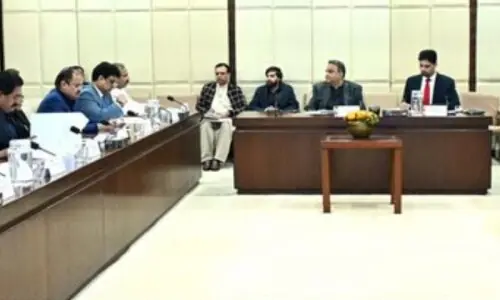ISLAMABAD: Pakistan has not made any tangible improvement in literacy rate which increased only 2pc during the last four years and at present stands at 60pc.
“A literacy rate of only 60pc considerably limits opportunities towards acquiring skills and technical knowledge for higher productivity and better-earning levels,” says Economic Survey released on Thursday.
It said according to the Pakistan Social and Living Standards Measurement (PSLM) Survey 2018-19, the literacy rate of the population (10 years and above) is 60pc compared to 58pc in 2015-16.
“The literacy rate is higher in urban areas (74pc) than in rural areas (51pc),” read the survey. Province-wise analysis suggests that Punjab has the highest literacy rate with 64pc followed by Sindh and Khyber Pakhtunkhwa (excluding the merged tribal areas) with 57pc, Khyber Pakhtunkhwa (including merged areas) with 55pc and Balochistan with 40pc.
The Economic Survey said large investments in education access and quality are required to obtain the objective of educated and skilled human resources, along with comprehensive planning, removal of gender inequalities, and enforcing more accountability in the sector.
Education plays a leading role in improving the economic condition of the country and is a vital investment for human and economic development.
The survey while pointing out overall assessment in education sector said that overall education situation based on institutes, and teachers, have shown a slight improvement. It said the total number of enrolments during 2017-18 was recorded at 51 million compared to 47.6 million during the same period last year, which shows an increase of 7.1pc.
The survey while highlighting uniform education system, said that present government is making efforts to introduce single national curriculum with the aim to eliminate the disparity between curriculums, facilities, medium of instruction, and have a fair and equal opportunity for all children to receive a high-quality education.
Phase-I of single national curriculum (for class 1-5) has been developed, and its implementation would be completed by March 2021. Similarly, phase-II of single national curriculum (for class 6-8) would be ready by March 2021 and implemented by March 2022, while the phase-III curriculum (for class 9-12) would be ready by March 2022 and implemented by March 2023.
While discussing, Net Enrolment Rates Net Enrolment Rates (NER), primary level refers to the number of students enrolled in primary schools of age 6 to 10 yea group, the survey said that NRE saw slight improvement as it was 66pc in 2015-16 and now for year 2018-19 it was recorded 66pc.
Published in Dawn, June 14th, 2020

































